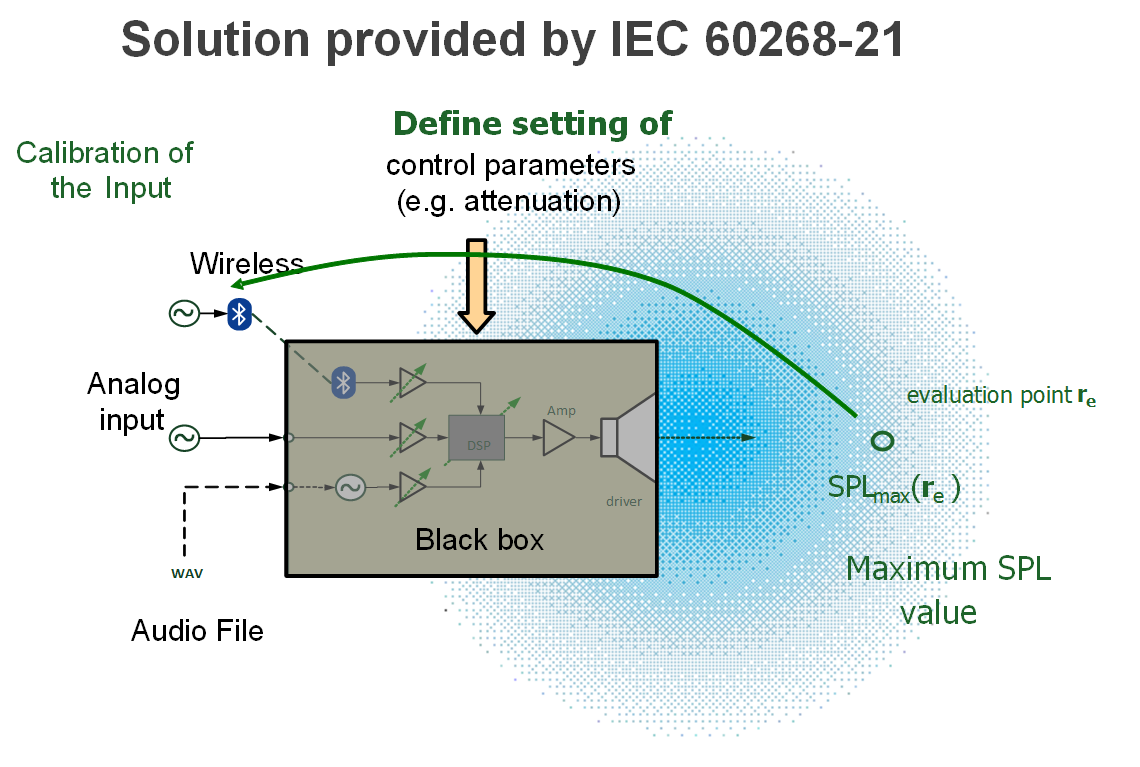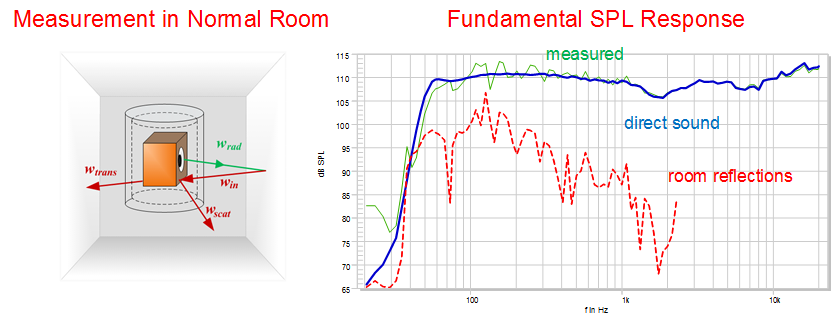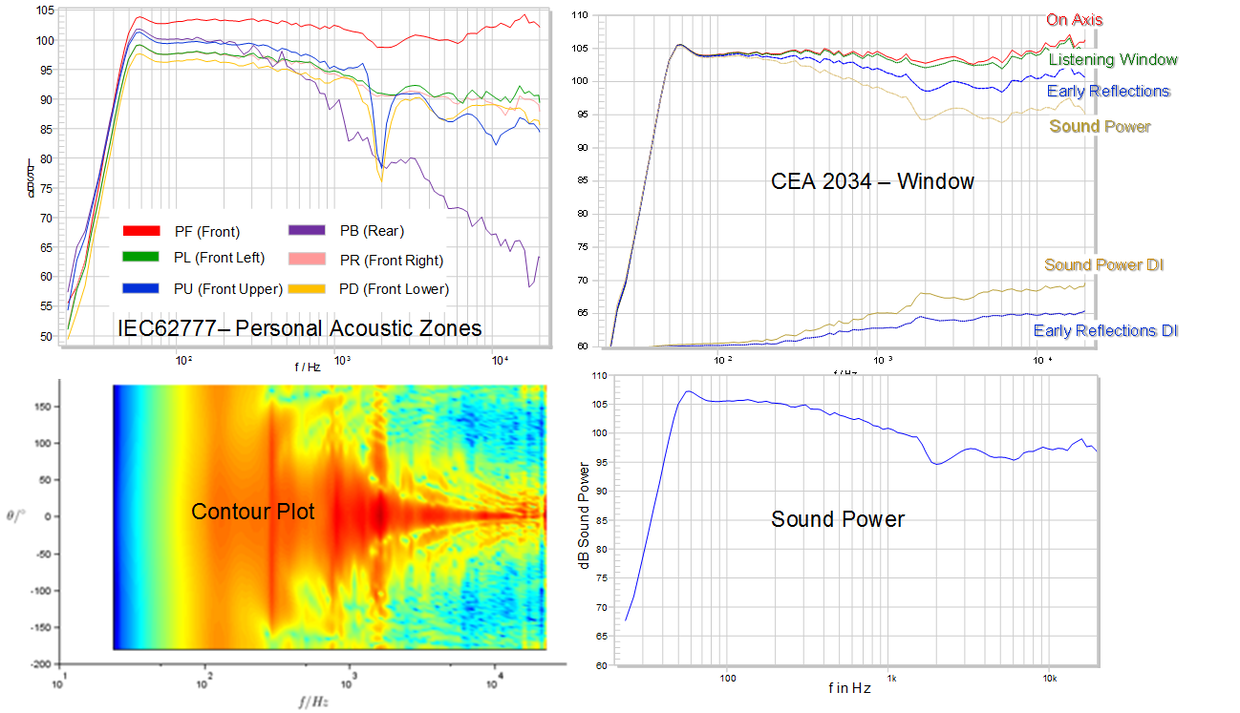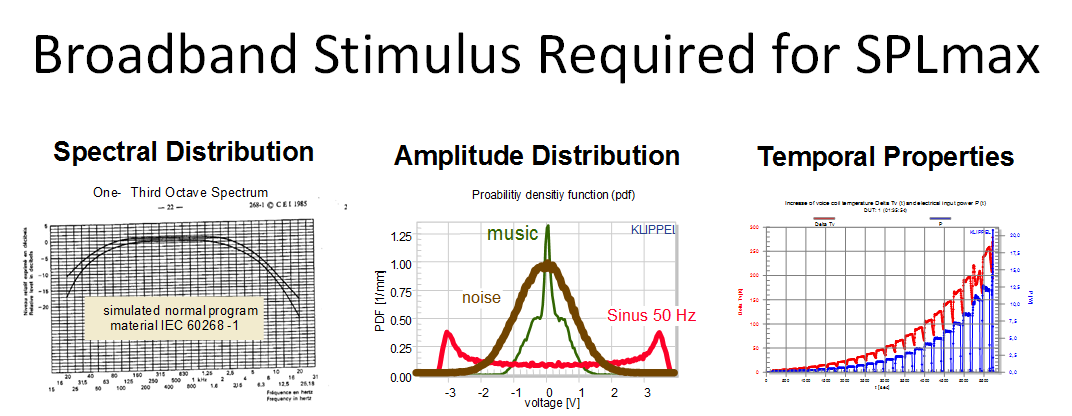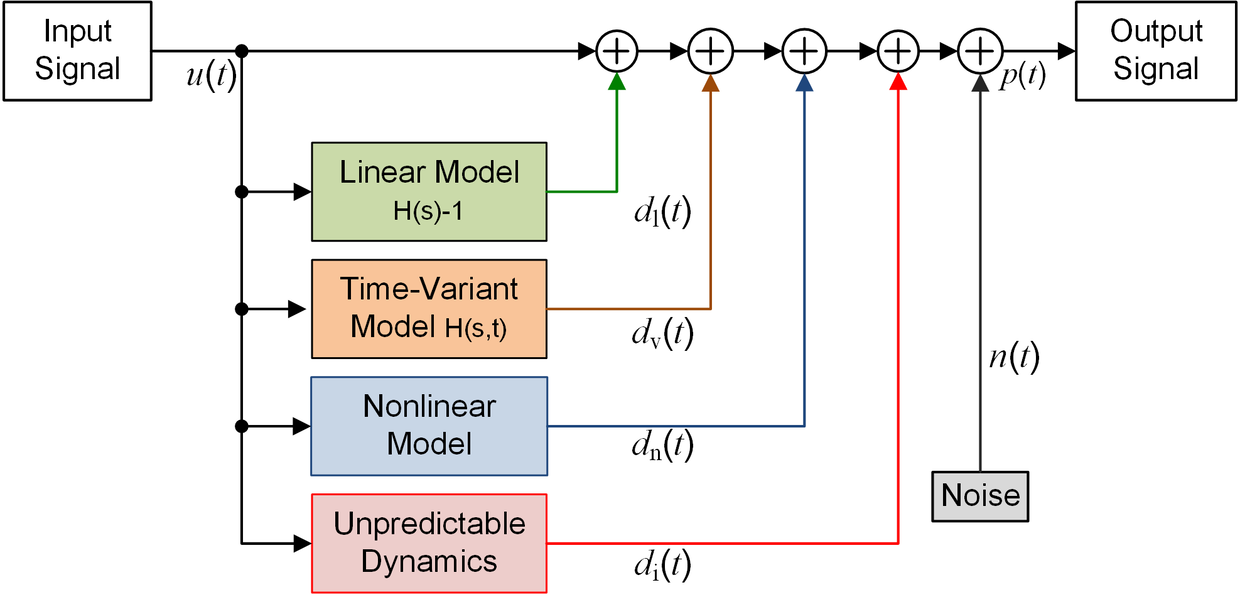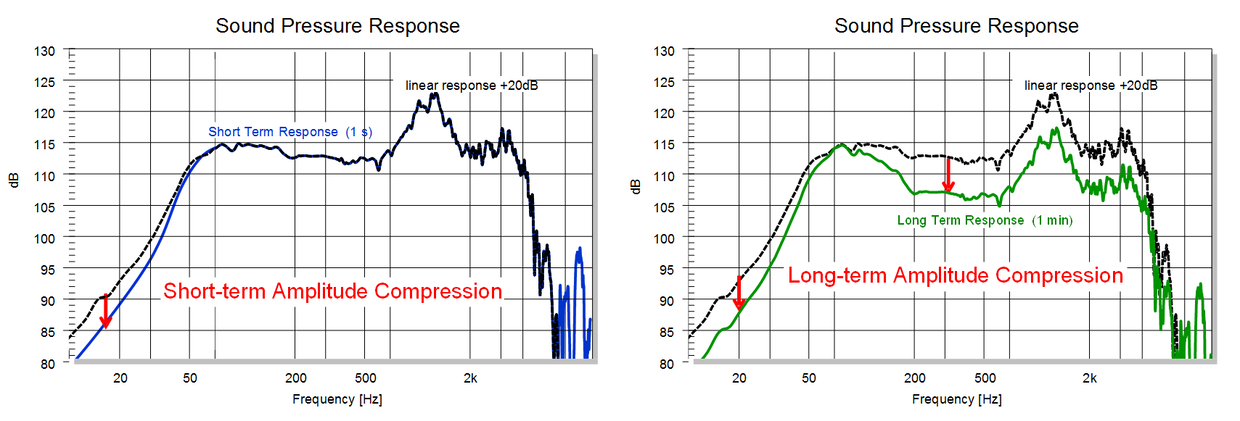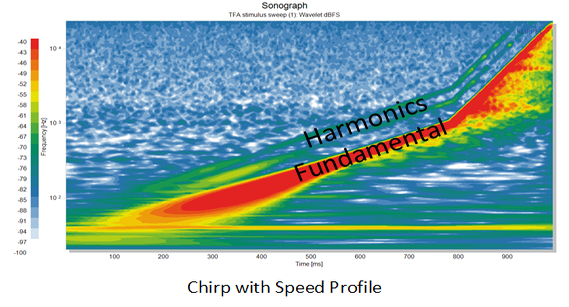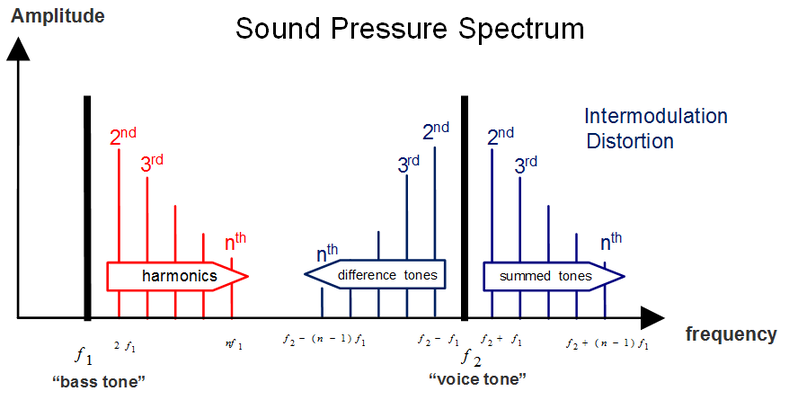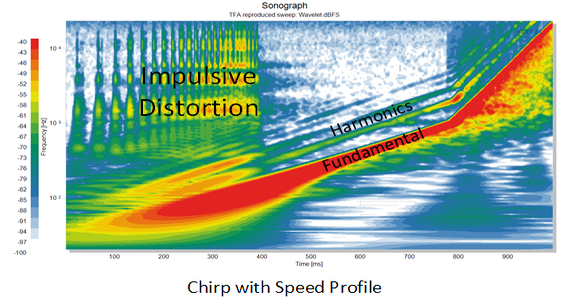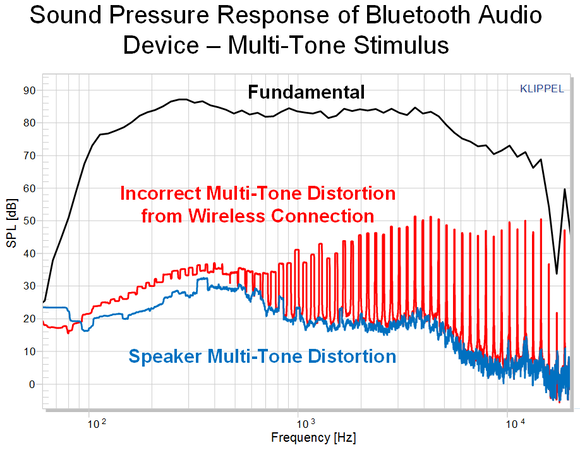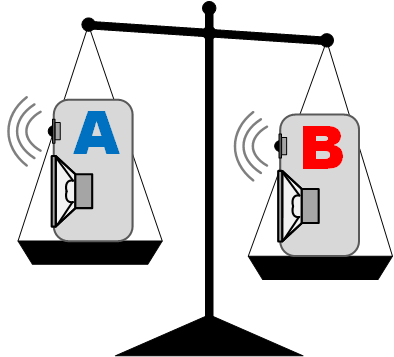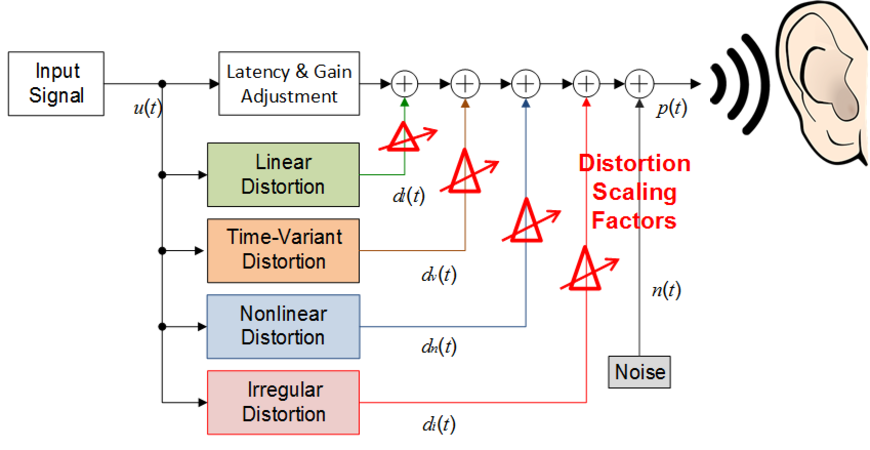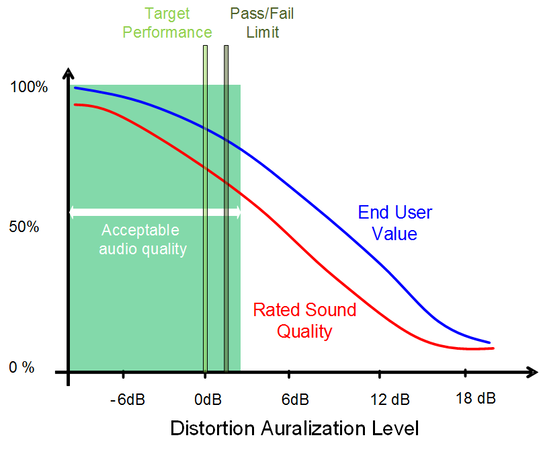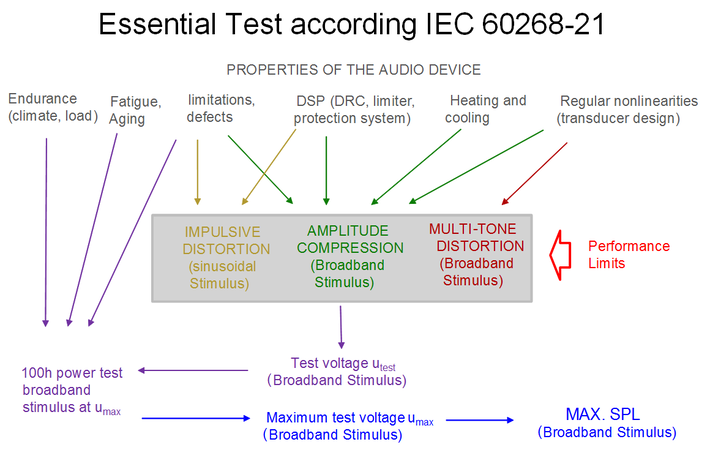Series 1: IEC 60268-21
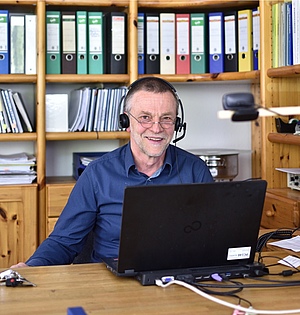
Acoustical Measurement of Sound System Equipment according to IEC 60268-21
The first KLIPPEL LIVE series have started with a 15 part web-seminar about using the IEC 60268-21 acoustical measurement standard, perfect for anyone working with speakers, headphone and other audio devices.
This includes practical information regarding:
- Quickly and accurately measuring in normal, non-anechoic rooms
- Comprehensive distortion testing
- Linking physical and perceptual evaluation
Along the way, we give tips and discuss how to:
- Interpret measurement results
- Avoid pitfalls
At the end of each live webinar, we have answered questions submitted by you, the viewer.
Overview
#1: Modern Audio Equipment Needs Output Based Testing
The first session addresses the challenges in testing modern audio devices and how they are overcome through the output-based testing described in this new international standard. This standard introduces SPLmax and gives the manufacturers freedom to rate this value based on the particularities of the device and the application.
More Information
Key topics
- Standard measurement for modern audio systems
- SPLmax, basis for acoustical testing
- Freedom, flexibility for manufacturer
Video
With loading this video, you agree that your data will be transferred to YouTube and that you have read our data protection policy.
#2: Standard Acoustical Tests Performed in Normal Rooms
The second session addresses performing standard measurements in an untreated room using simulated free-field conditions using near-field scanning with wave expansion.
More Information
Key topics
- Problems, limitations of far-, free-field measurements
- Near-field scanning, wave expansion benefits:
- Improved SNR
- 3D data (near- & far-field)
- Self-check
- Accurate phase, time delay
- Higher resolution, fewer points, faster measurement
- Better than anechoic room
Practical demo
- Holographic measurement in untreated office
Video
With loading this video, you agree that your data will be transferred to YouTube and that you have read our data protection policy.
KLIPPEL modules
#3: Drawing Meaningful Conclusions from 3D Output Measurement
The third webinar addresses using 3D sound data for investigating directivity, personal acoustic zones and DSP applications such as beam steering for several different applications (e.g., professional application, personal audio devices, consumer-home, loudspeaker panels).
More Information
Key topics
- Simplifying acoustical measurement, interpretation such as directivity, etc.
Practical demo
- Meaningful, easy to interpret graphs from holographic measurement
- Directivity Index, Contour Plot & more
Video
With loading this video, you agree that your data will be transferred to YouTube and that you have read our data protection policy.
KLIPPEL modules
#4: Simulated Standard Condition at an Evaluation Point
The fourth webinar addresses simplifying standard measurements by compensating for room influence and microphone position in order to preform accurate single point measurements in any non-anechoic rooms.
More Information
Key topics
- Compensate room, distance (near- & far-field), half vs. full space
- Accurate compensation based on a reference (NFS)
- Fixed room compensation for all similar speakers
Practical demo
- Room compensation for accurate single point measurement
- Untreated office
- Near-field measurement, projected to 1 m distance
- Valid for all similar speakers
Video
With loading this video, you agree that your data will be transferred to YouTube and that you have read our data protection policy.
#5: Maximum SPL – Giving this Value Meaning
The fifth webinar addresses the broadband test stimulus used in rating SPLmax, calibration and long-term testing.
More Information
Key topics
- Broadband stimulus, characteristics for SPLmax
- Multi-tone test signal
- Kurtosis & crest factor
- Calibration, long-term testing
Practical demo
- Multi-tone measurement with room compensation in normal room
- Input calibration w/ multi-tone stimulus
Video
With loading this video, you agree that your data will be transferred to YouTube and that you have read our data protection policy.
#6: Selecting Measurements with High Diagnostic Value
The sixth webinar addresses the properties of different types of signal distortions, how to measure them, and interpretation to link symptoms with physical causes.
More Information
Key topics
- Comprehensive evaluation over the full working range
- Properties, causes, symptoms of linear, time-variant, regular nonlinear and irregular distortion (rub&buzz)
- Consequences for standard-compliant measurement techniques
- New sparse stimuli (Multi-tone, chirp, burst, …)
Video
With loading this video, you agree that your data will be transferred to YouTube and that you have read our data protection policy.
#7: Amplitude Compression – Less Output at Higher Amplitudes
The seventh webinar investigates the causes of amplitude compression and the consequences for testing along with live demos.
More Information
Key topics
- Amplitude compression:
- Physical causes
- Stimuli dependency, consequences
- Test methods
- Protection (e.g., DSP)
- Result interpretation
Practical demo
- Short, long term amplitude compression measurements using different stimuli
- Multi-tone, chirp, steady state single tone & short sine burst
- Comparison, interpretation of results
Video
With loading this video, you agree that your data will be transferred to YouTube and that you have read our data protection policy.
#8: Harmonic Distortion Measurements – Best Practice
The eighth webinar addresses harmonic distortion in depth including measurement techniques, test stimuli and result interpretation.
More Information
Key topics
- Harmonic Distortion:
- Absolute (SPL) vs relative view (percent referenced to fundamental)
- Ultra-fast measurements using logarithmic chirps, increasing sweep speed
- Equivalent Input Harmonic Distortion (EIHD) simplifies interpretation
- Measurement methods, setup
Practical demo
- Investigating harmonic distortion:
- In normal room, with and without room compensation
- Result interpretation
- Root cause analysis (dominant nonlinearity)
- Amplitude compression of harmonics
Video
With loading this video, you agree that your data will be transferred to YouTube and that you have read our data protection policy.
#9: Intermodulation Distortion – Music is More than a Single Tone
The ninth webinar address intermodulation distortion in detail including physical causes, measurement techniques and result interpretation.
More Information
Key topics
- Intermodulation distortion (IMD):
- Physical causes
- Two-tone vs. Multi-tone stimulus
- Root cause investigation (dominant nonlinearities)
- Interpretation: essential information not found in harmonics
- Indispensable for testing L(x) nonlinearity (reduced by shorting rings)
Practical demo
- Intermodulation distortion measurements using:
- Two-tone stimulus (sweeping bass tone vs. voice tone)
- Multitone complex
Video
With loading this video, you agree that your data will be transferred to YouTube and that you have read our data protection policy.
#10: Impulsive Distortion – Rub&Buzz, Abnormal Behavior, Defects
The tenth webinar addresses the properties of impulsive distortion from loudspeaker defects and irregularities and discusses compliant measurement methods such as time domain analysis.
More Information
Key topics
- Energy based measurements (e.g., THD) are not sensitive for impulsive distortion
- Time domain analysis is required
- Chirp is a power test stimulus
- The fine structure of the distortion gives clues about the root cause
- Subjective evaluation of slowed-down distortion time signal
Practical demo
- Measuring impulsive distortion
- Viewing in frequency and time domains
- Listening to distortion time signal
- Investigating at different input amplitudes
- Using time-frequency mapping + limits in end-of-line testing
Video
With loading this video, you agree that your data will be transferred to YouTube and that you have read our data protection policy.
#11: Pitfalls in Testing Wireless Audio Devices
The eleventh web-seminar addresses issues that arise when testing wireless audio devices, their effects and how to overcome them for accurate measurements.
More Information
Key topics
- Challenges, problems with wireless transmission
- Tips, solutions for reliable data in R&D and QC
Practical demo
- Sample rate deviation problem - phase mismatch
- How to overcome wireless issues for chirp, multi-tone testing
Video
With loading this video, you agree that your data will be transferred to YouTube and that you have read our data protection policy.
KLIPPEL modules
- Transfer Function Measurement (TRF)
- External Synchronization (SYN)
- Multi-Tone Measurement (MTON)
- 3D Distortion Measurement (DIS)
- Tone Burst Measurement (TBM)
- Near Field Measurement (NFS)
- Polar Far-Field Measurement (POL)
- Sound Pressure Task (SPL)
- Air Leak Stethoscope (ALS)
- Spectrum Analysis (SAN)
- Equalization & Alignment (EQA)
- Audio Player Module (PLAY)
#12: Benchmarking of Audio Products Under Standard Conditions
The twelfth webinar addresses meaningful metrics for benchmarking audio products at different amplitudes including different approaches using max. SPL.
More Information
Key topics
- Rated maxSPL using IEC 60268-1 is important for testing, benchmarking
- Selecting important characteristics for assessing small and large signal performance (Compression, multi-tone and impulsive distortion)
- Target application important when defining limits, tolerances
Practical demo
- Benchmarking two audio products using different methods by comparing maxSPL, compression, distortion and more
Video
With loading this video, you agree that your data will be transferred to YouTube and that you have read our data protection policy.
#13: Auralization of Signal Distortion – Perceptual Evaluation
The thirteenth webinar discusses the different techniques for evaluating perceived audio quality and its benefits.
More Information
Key topics
- Perceived audio quality depends heavily on test conditions (stimulus, room, etc.)
- Investigating distortion
- Incoherence
- Residuum (difference between measured & modeled signals)
- Auralization of linear, nonlinear distortion
- Generate virtual device with modified distortion ratio
- Combines physical, perceptual assessment
- Simplifies, speeds up listening tests, product development
Practical demo
- Assessing perceptual audio quality through incoherence and working with the residuum including auralization
Video
With loading this video, you agree that your data will be transferred to YouTube and that you have read our data protection policy.
#14: Setting Meaningful Tolerances for Signal Distortion
The fourteenth webinar addresses setting limits to balance cost vs performance (including perceptual) and reliability in order to maximize the end-user value of an audio product.
More Information
Key topics
- Modelling the human ear
- Audibility threshold only one part of audio quality
- Impact of masking
- Measuring audio quality with music
- Maximizing end user value through performance sensitivity
Practical demo
- Audibility of amplitude modulation
- Finding tolerances using performance sensitivity
Video
With loading this video, you agree that your data will be transferred to YouTube and that you have read our data protection policy.
#15: Rating the Maximum SPL Value for a Product
The web-seminar series Acoustical Measurement of Sound System Equipment according to IEC 60268-21 culminates in this fifteenth and final webinar which addresses rating an audio product’s maxSPL by combining and applying the information discussed in all of the previous webinars.
More Information
Key topics
- Step-by-step overview of rating maxSPL in practice
- Comparison, harmony of IEC 60268-21 to other standards (CEA, etc.)
Video
With loading this video, you agree that your data will be transferred to YouTube and that you have read our data protection policy.

